Last week, we looked at a beautiful stumpwork chasuble kept at Merseburg Cathedral. This week, we will continue our exploration of late medieval stumpwork embroidery with a stunning chasuble kept at the Dommuseum in Vienna, Austria. As I haven’t been able to find published material for this chasuble, I don’t know how it ended up in the collection of the museum. What I do know is that it was not part of the Cathedral treasury of St Stephen. Let’s have a look at the outstanding stumpwork embroidery.
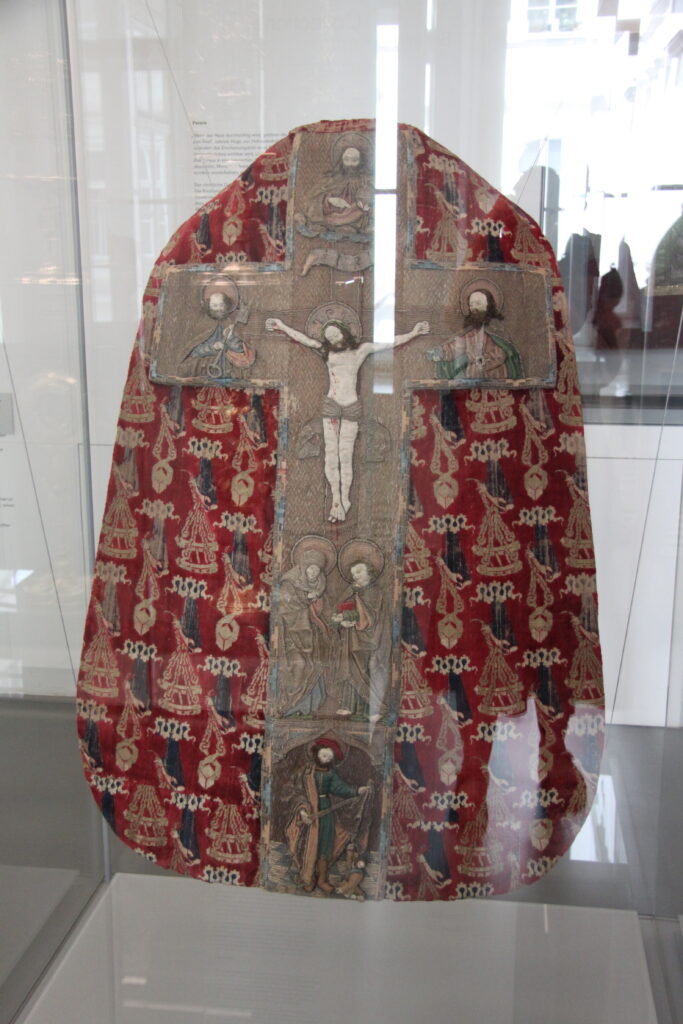
The chasuble cross was originally mounted onto another vestment. Nothing is known about this older vestment. The stumpwork embroidery was made at the start of the 16th-century in either Bohemia or Austria. The embroidery shows the Crucifixion with Mary and St John standing beneath the cross. The busts of St Peter, God the Father and St Paul flank the cross. This is the exact same configuration we saw last week. However, the panel beneath the Crucifixion scene differs – the Vienna chasuble shows St Martin sharing his cloak with the beggar.
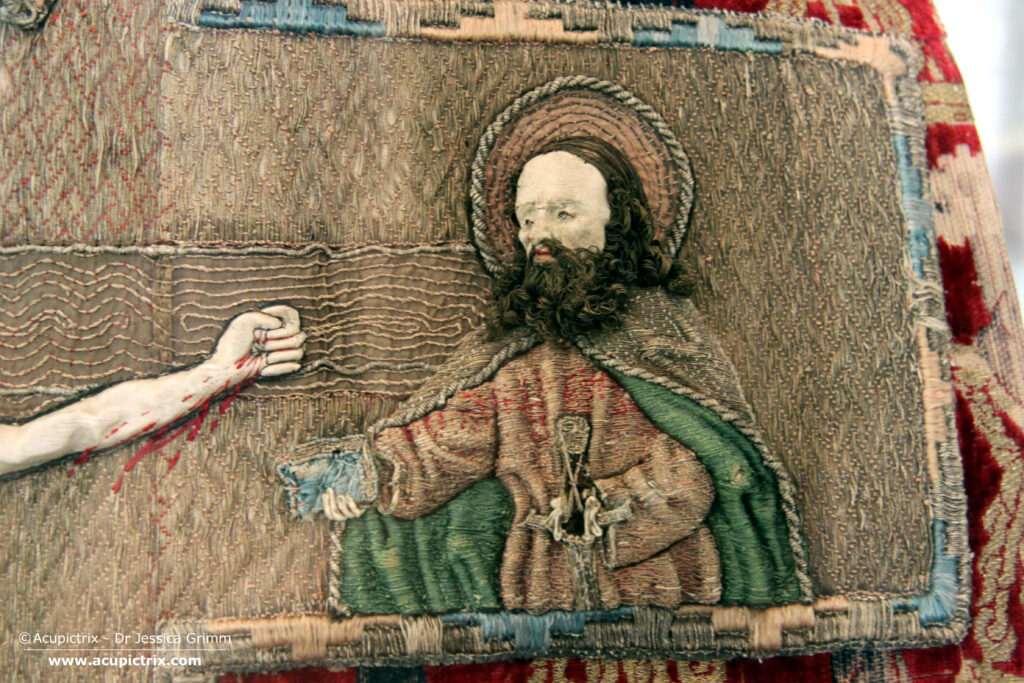
Although the scene is the same, the actual stumpwork figures on the chasuble crosses from Merseburg and Vienna differ. This means that they were likely not made in the same late medieval embroidery workshop. However, the embroidery techniques used are very similar. The chasuble crosses clearly come from the same region.
When we zoom in on the figure of St Paul, we see that his head shows the same sharpness as we saw in some of the heads of the Merseburg chasuble. The superb curls are made of silk-wrapped wire. And whilst Jesus’ hand is probably made from wire covered with silk and then stitched on, to form the fingers (Merseburg technique), the hands of St Paul are made of silk-wrapped wire. This technique is still taught in modern stumpwork.
Typically ‘German’, is the use of twists made of gold gimp to accentuate the mantle and the nimbus. Filling the nimbus with a piece of silk and then couching it down with a single gold thread is also often seen in contemporary embroidery from the German-speaking parts of medieval Europe. And although the orphrey frame is not as elaborate as we saw last week, the technique is comparable.
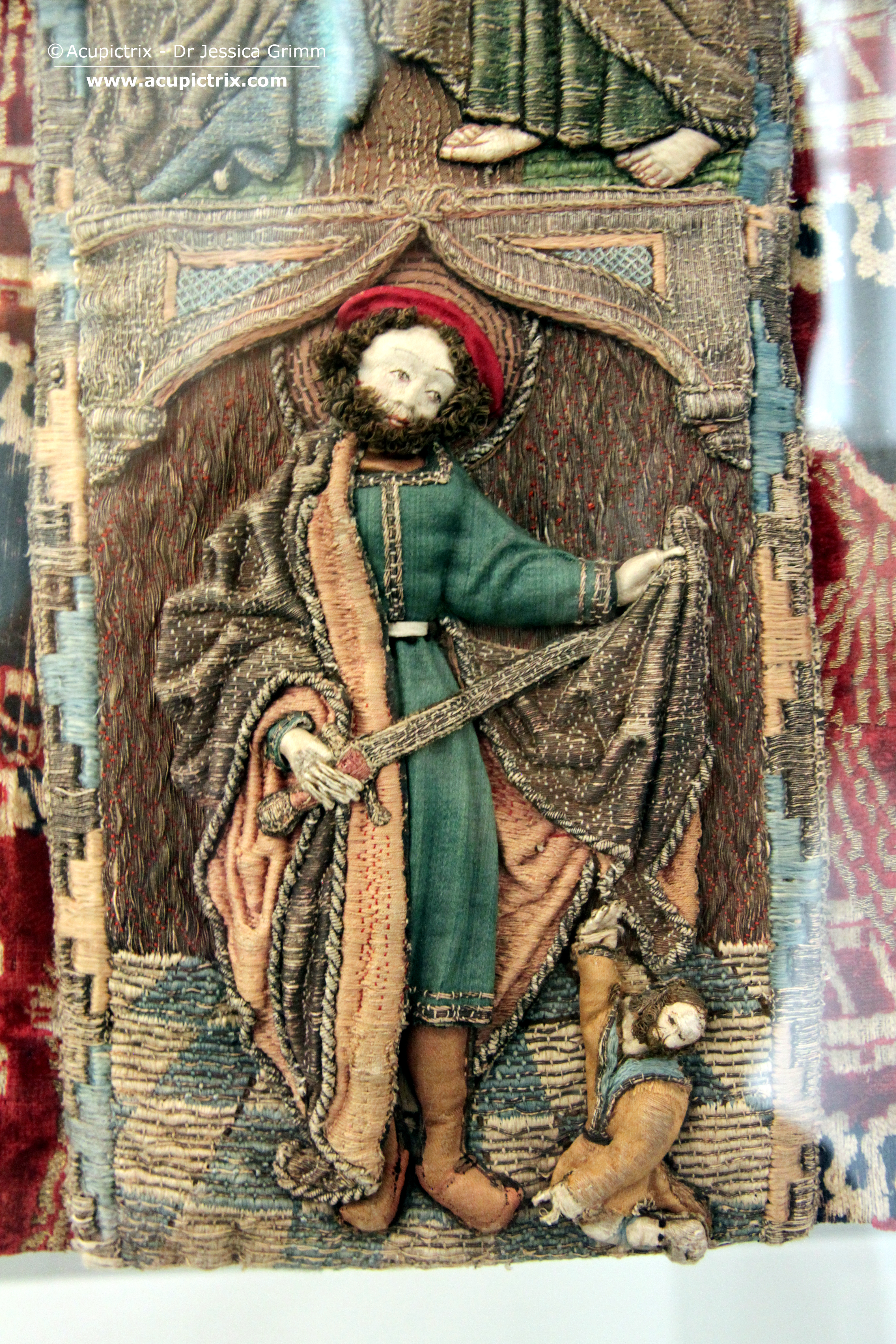
And here’s the beautiful stumpwork figure of St Martin sharing his cloak with the beggar. You can clearly see that the emphasis is on the skillfully embroidered figures, not so much on the background. The architectural details are sparse and not so well embroidered. This probably hints at labour division between a master embroiderer making the figures and his apprentice stitching the background. We see a simple open basketweave diaper pattern for the golden background. At least it is consistently stitched in red silk in the St Martin panel. The Crucifixion panel mixes red with yellow couching stitches. Being a late medieval embroidery apprentice was clearly taxing.
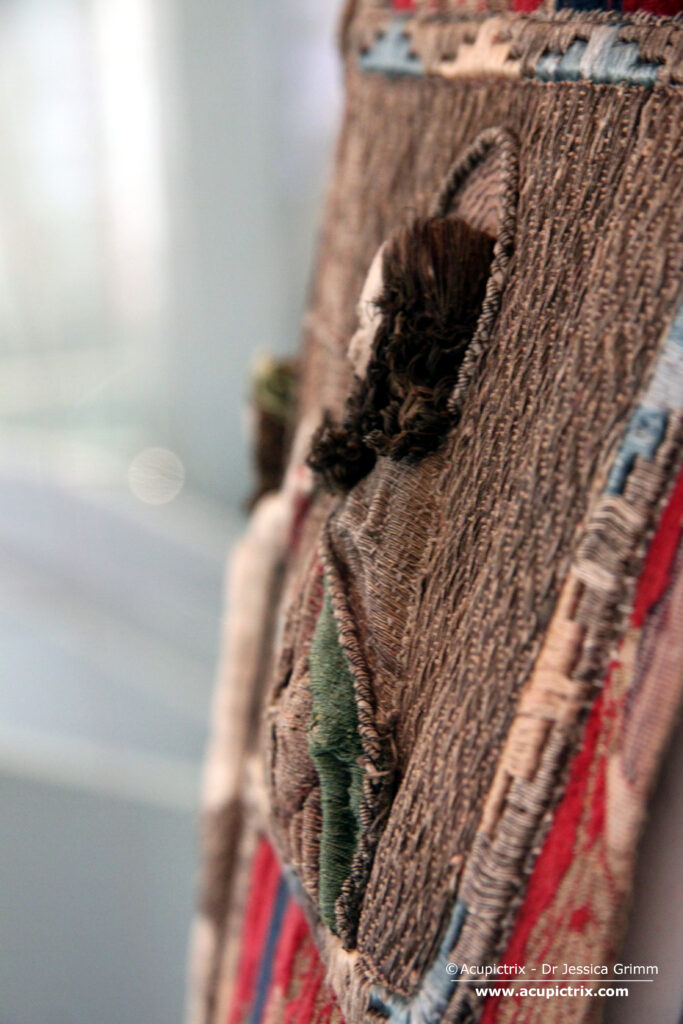
And here’s a picture of the stumpwork figure of St Paul to give you an idea of the three-dimensionality of these embroideries. I hope you liked seeing another piece of late medieval stumpwork up close. It is still a mystery to me how some of these techniques hopped over to England and emerged there at a later date. So far, I have not been able to find any missing links to bridge the gap.
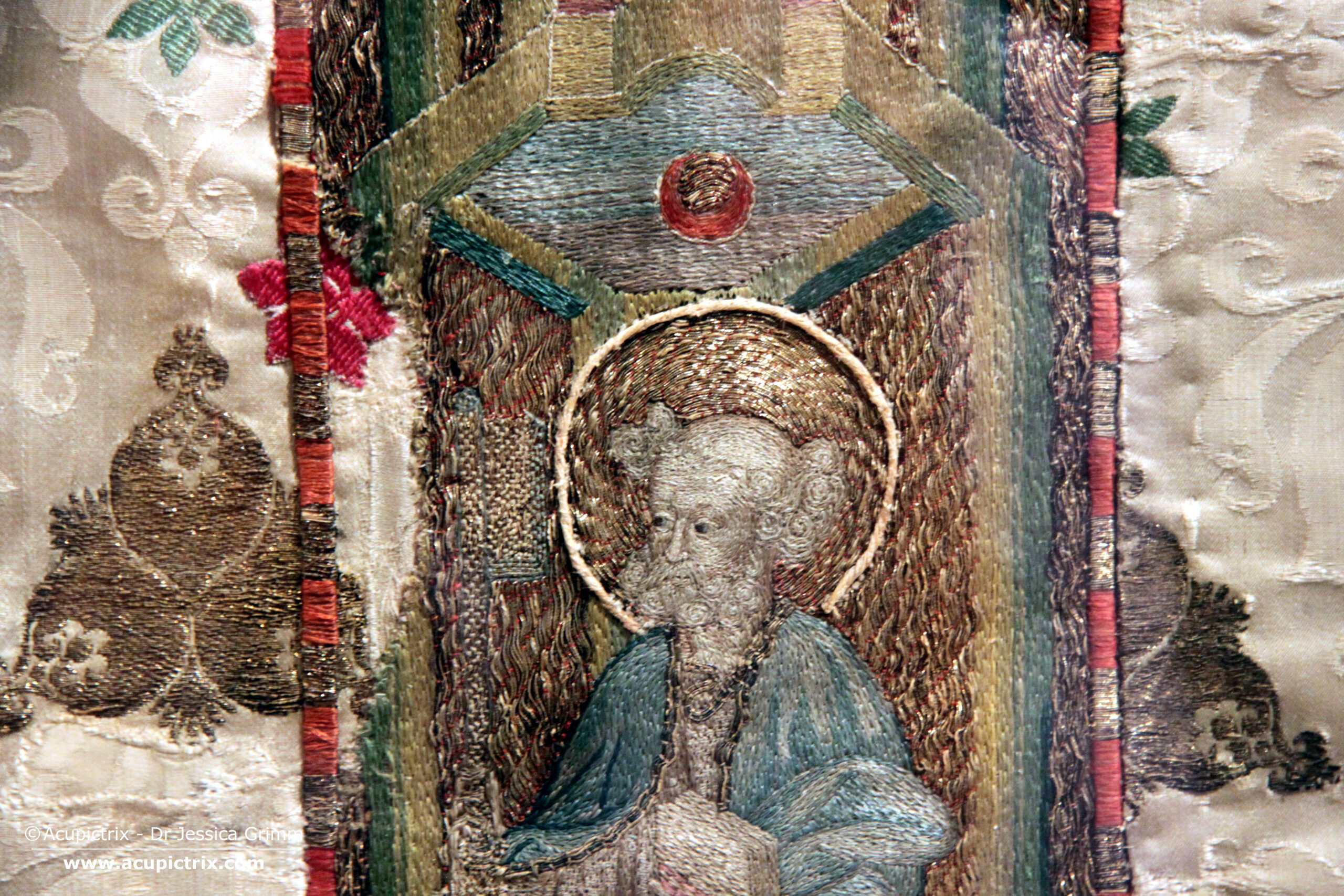
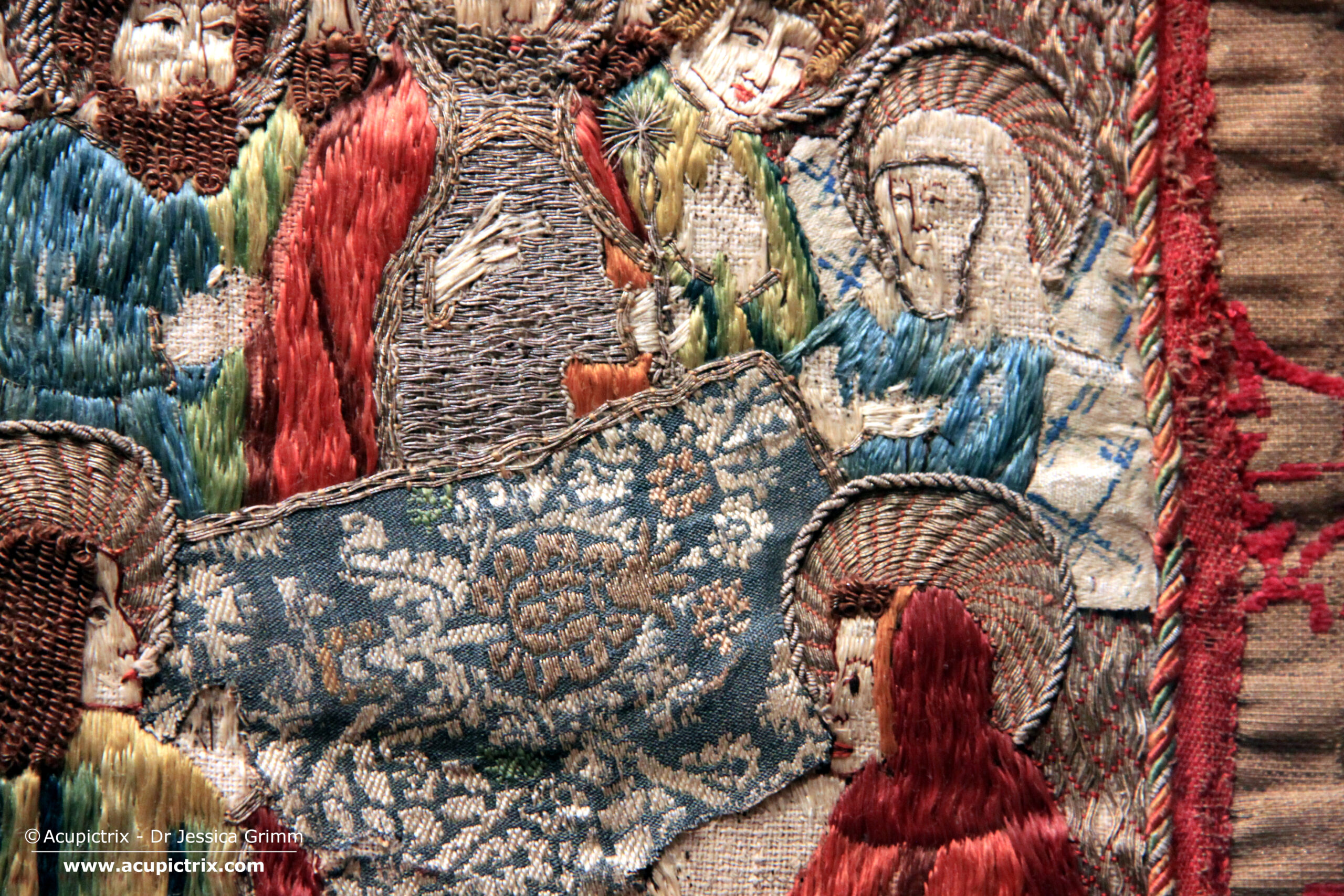
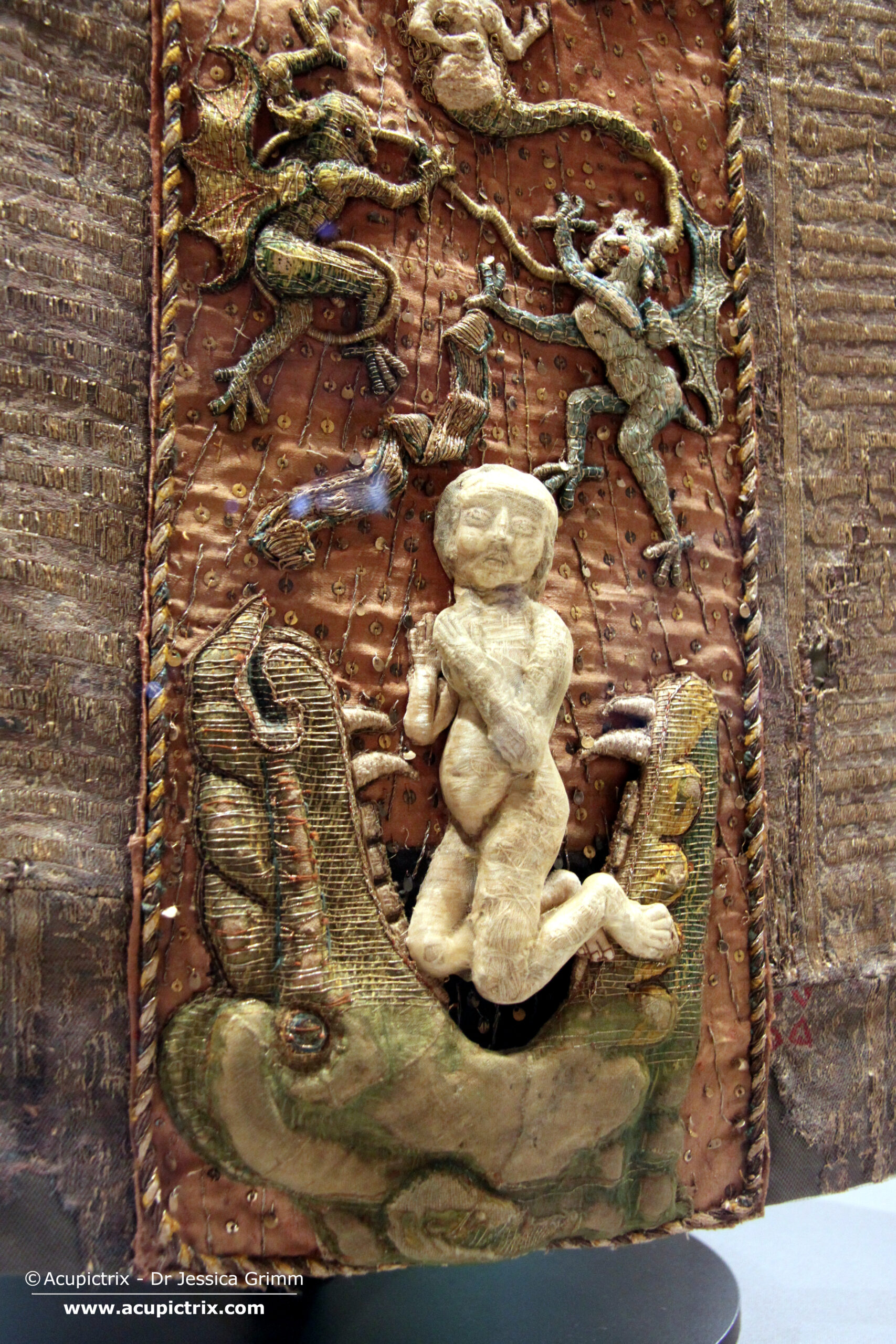
0 Comments